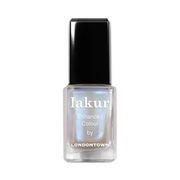Squalane Guide: Uses, Hydration & Skincare Tips
You might have heard of squalane before - this skincare ingredient is having a bit of a moment right now thanks to its unique benefits for the skin. It’s in a lot of skincare products these days - chances are, if you have a look at your skincare routine right now it’s in at least one product.
But what is squalane and why is it so good for the skin? Here’s everything you need to know about squalane - and if it’s something you should add to your skincare routine!
What Is Squalane and Where Does it Come From?

On its own, squalane is a colourless and super lightweight oil. Technically, it’s a hydrocarbon - but for the purposes this post, we’ll refer to squalane as an oil or a lipid since that’s how it exerts its benefits on the skin. It’s almost like a ghost oil - it’s lightweight, has no smell, is non-comedogenic, and is antibacterial - where does it actually come from?
In the early days, Squalane actually used to come from shark livers - the names ‘squalene’ and ‘squalane’ come from the Latin word for shark, ‘Squalus’.
However, the squalane that you see listed in skincare ingredients lists these days doesn’t come from shark livers - thank goodness! Instead, it’s isolated from olive oil in large quantities, or produce from other plant-based sources like sugarcane and rice - no sharks required.
Declaré Caviar Perfection Extra Nourishing Cream | $124
This cream from Declaré combines the power of squalane with potent plant extracts and caviar to perfect your skin.
What are the Benefits of Squalane?
What makes squalane such a great skincare ingredient starts with being a great moisturiser - but that’s not all squalane can do for skin! Here are four major benefits of squalane.
Powerful Moisturising Abilities
Like almost all oils, squalane is fantastic at moisturising and softening skin due to a combination of emollient (moisturising properties) and occlusive (hydration-sealing) properties. It’s able to lock water-based hydration into the skin for serious glow (plus baby smooth, moisturised skin).
Antioxidant Potential
Studies have found that squalane might also have antioxidant properties. Antioxidants protect the skin from environmental stressors such as pollution, cigarette smoke, and ultraviolet light exposure - all issues that in the long run, cause premature signs of ageing.
Lightweight Texture
One of the biggest appeals of squalane is that it packages so much moisturisation in an incredibly lightweight texture. It’s extremely thin and watery (for an oil) which means that it’s great for all skin types - yes, even oily skin can benefit from using squalane! It also has antibacterial properties, so it could help to soothe breakouts over time, as well.
Soothes Vulnerable Skin
One of the other notable effects of squalane observed in studies is how effectively it calms and soothes irritated skin, especially skin that’s prone to eczema, aka atopic dermatitis. It’s thought that the antioxidant abilities of squalane have uniquely anti-inflammatory effects on the skin. Combined with its powerful emollient abilities, this is a sure-fire recipe for calming down stressed skin and preventing any irritation in the first place.

GA-DE Hydra Sublime Royal Pomegranate Overnight Recovery Oil | $55
This facial oil has a blend of squalane, evening primrose, and macadamia nut oils for a soothing and intensely moisturising night treatment.
What’s the Difference Between Squalane & Squalene?
Squalane is often confused with ‘squalene’ - yep, that’s with an E instead of with an A. But what’s the difference between the two? Well, let’s start with what squalene (with an e).
Squalene is a lipid that’s actually produced by our own skin cells as a part of our sebum and in other parts of the body. As a lipid, it helps to moisturise the skin, preventing water loss and dryness.
The thing is, our production of squalene drops over time - meaning our skin can’t naturally benefit for as long as we’d like. I know what you’re thinking - well, why don’t we apply squalene to our skin instead of squalane?
The catch is that squalene (with an e) is actually far less stable than squalane (with an a) - to put it simply, squalene isn’t used in skincare formulas because it goes off too quickly. Squalane is a stabilised version of this, meaning it can be used in skincare formulas or even on its own as a facial oil.

SK-II R.N.A. Power Radical New Age Essence | $270
This serum combines squalane with niacinamide and pitera for glowing, flawless skin.
Which Skin Type is Squalane Best For?
One of the best things about squalane is that it’s great for all skin types! Because it’s so similar to squalene, which is already found in our skin, it has a very low risk of causing breakouts. It also has it’s own antibacterial benefits, which could help to fight off any acne-causing bacteria for clearer, smoother skin.
It’s super lightweight, which means that it won’t feel too heavy on the skin - even for those with oily skin. This means that everyone’s skin can benefit from squalane’s moisturising and soothing abilities - and yes, that even means those with sensitive skin.
Need some help putting together the best skincare routine for your skin type? Try our skin quiz!
Products Mentioned:





